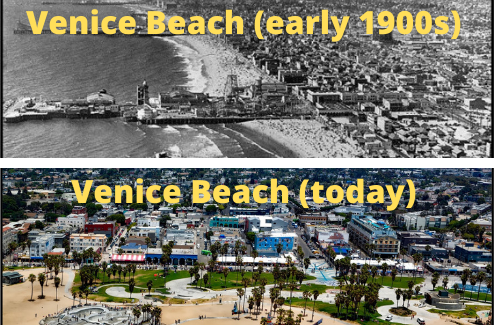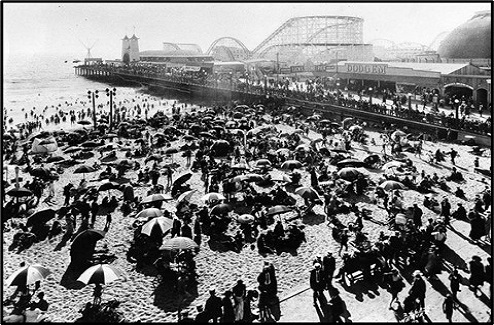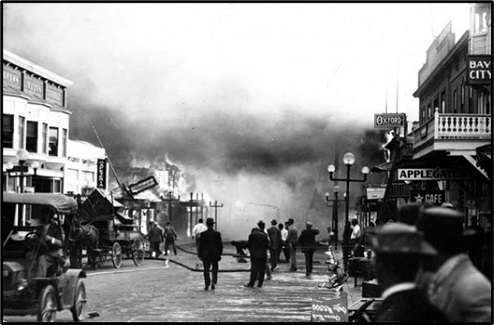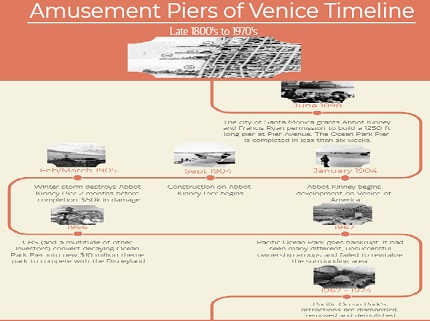Abbot Kinney and his family owned and operated the Abbot Kinney Pier and the Venice Amusement Pier while others were run by different investment groups. These were gigantic structures that were large enough to house multiple roller coasters, rides, exhibits, palatial bath houses, concessions, game halls, dance halls, restaurants, theaters and much more. The largest of the piers was 1500 ft long by 525 ft wide and the others were comparable in size. For reference, today’s Santa Monica Pier is 1600 ft long and the Malibu Pier is 780 ft long, which serves to highlight what a feat of engineering these structures were in their time.
Families would enjoy a day out, sweethearts would go on dates, on-leave servicemen would head to the dance halls in hopes of meeting girls from all corners of the world. You had your classic amusement park rides and attractions that modern-day people might recognize from fairs and carnivals: roller coasters, log flumes, extravagant fun houses, Virginia Reels, spinning aerial planes, animal exhibits, aquariums, historic exhibits and more. But there were attractions that certainly made people cock their heads in bewilderment. A few strange favorites included the Million Dollar Pier’s newborn baby incubator exhibit—or “Baby Bank”--that provided free care to prematurely born babies (a service that wasn’t readily available during the early 1900’s), a secret society initiation attraction, and an Underworld Wax Museum that depicted scenes of an opium den, a brothel, a kidnapping, the Parisian sewers, and torture. Yay, family fun!
The piers were also riddled with misfortune. If you’ve ever gone to a carnival and thought, “How is it that people don’t get seriously injured on some of these rides?”, well, they certainly used to. Let’s just say that the safety precautions hadn't quite caught up with the thrill of the rides at that time. Many rides were notorious for their accidents and patrons put themselves at serious risk for not following rules. There were animal maulings and unfortunate, negligent animal deaths. And, of course, the “high-flying” attractions and freak show performers had their fair share of accidents. For instance, a human cannonball gone awry and a parachuting human firework show—yes, you read right--caught fire. Speaking of...


 So what happened to all these amusement piers? Where did they go? There were several contributing factors to their disappearances, but fire took precedent above all. There were 4 major fires that consumed their respective piers. There was so much flammable material on these piers they were like tinder boxes. Couple that with strong winds off the ocean and you have a pretty good recipe for disaster.
So what happened to all these amusement piers? Where did they go? There were several contributing factors to their disappearances, but fire took precedent above all. There were 4 major fires that consumed their respective piers. There was so much flammable material on these piers they were like tinder boxes. Couple that with strong winds off the ocean and you have a pretty good recipe for disaster.